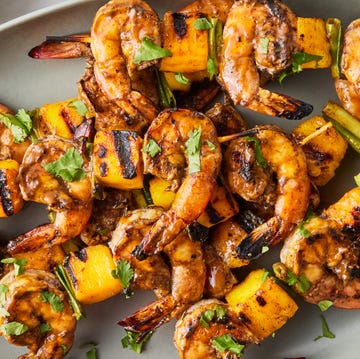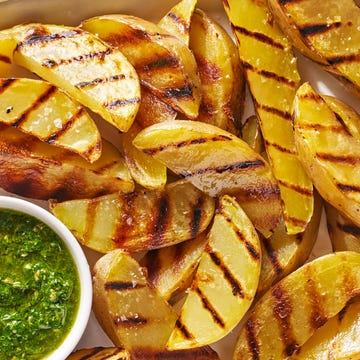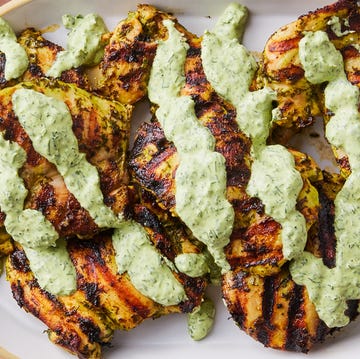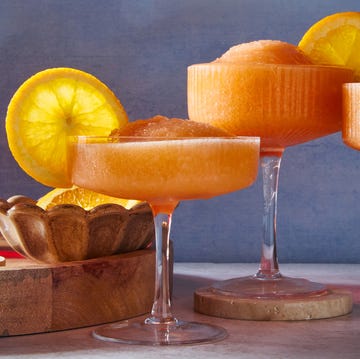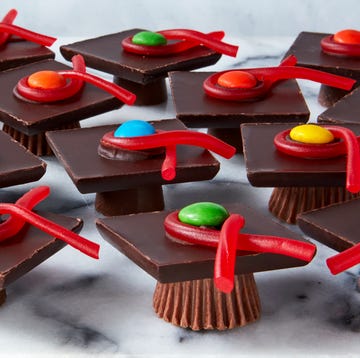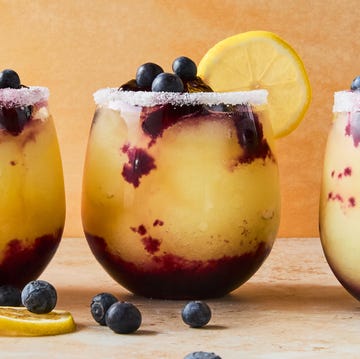1Weddings Around the Globe
 Feng Li/Getty Images
Feng Li/Getty ImagesNo matter where in the world, marriage counts among life's most cherished celebrations. Yet, as each culture, community, or country varies in their ceremonial rituals, so, too, does their food of choice for the big day. Learn about traditional wedding eats (and the reasons behind why they're served) from these countries across the globe.
2England
 Melanie Acevedo
Melanie AcevedoWhen the Royals announced their choice of wedding cakes, they revealed a taste for the nostalgic and the traditional. Prince William chose a childhood favorite, chocolate biscuit cake, while Kate Middleton opted for the customary multi-tiered English fruit cake.
In medieval times, English guests brought small cakes to weddings for the bride and groom to kiss over. These cakes were flavored with fruit as a symbols of fertility and prosperity and most often topped with a layer of marzipan and royal icing. While in the United States, the top layer of the wedding cake is reserved for the couple's first anniversary, English tradition reserves the top layer as a christening cake to celebrate the birth of the couple's first child.
Advertisement - Continue Reading Below
3France
 Erica Futran/ Stock Food
Erica Futran/ Stock FoodFrance’s traditional wedding cake is nothing short of ambitious. In fact, it slightly resembles their most recognized structure: the Eiffel Tower. This cake, called a "croquembouche," is not really a cake at all. It’s a tower of cream puffs (or profiteroles) that are covered in caramelized sugar (or sometimes dipped in chocolate) and arranged into an elegantly tapered tower. Sugared almonds, flowers, or ribbons are often interspersed with the cream puffs. Edible art? Oui.
4Italy
 malerapaso / Istock
malerapaso / IstockItalians know how to celebrate: Traditional wedding receptions can boast as many as 14 courses, including stuffed mushrooms, olives, salami, pickled peppers, calamari, prosciutto, and other antipasti, along with servings of pasta, salad, and soup. There is also a symbolic element to Italian wedding fare. Guests are served twists of fried dough covered in powdered sugar, called "bowties," which are believed to bring good tidings. In some instances, guests are given gift-boxes filled with candied almonds, meant to represent the sweet and bitter (or the "better or worse") aspects of life.
Advertisement - Continue Reading Below
5Norway
 Dennis Gottlieb / Stock Food
Dennis Gottlieb / Stock FoodNorway's traditional wedding cake, called kransekake, translates literally to "ring cake," which seems appropriate for the occasion, though this cake can be found at various ceremonies in Norway, including baptisms and at holiday parties and dinners. Kransekake is made with almonds, sugar, and egg whites, and is created by stacking graduated rings of cake on top of each other to form a conelike shape. Ideally, the cake is soft and chewy, but sturdy enough to hold up throughout the ceremony. Sometimes a bottle of wine is placed in the center: Yet another wise structural choice!
6Morocco
 Winfried Heinze / Stock Food
Winfried Heinze / Stock FoodMost Moroccan weddings and their related festivities can last for several days, which translates to many meals. The traditional tagine (a type of stew) is generally served family style. For dessert, a large basket of fruit is often passed around in lieu of one big cake. However, not to worry, if you're attending a Moroccan wedding, you'll likely be sent home with a goody box full of pastries.
Advertisement - Continue Reading Below
7Bermuda
 Freudenthal Verhagen / Istock
Freudenthal Verhagen / IstockOn a couple's wedding day, it is traditional for the bride and groom to put a cedar sapling on top of their cake. Upon arriving at their first home together, the couple plants the sapling and watches it grow as a symbol of their union.
8Brazil
 Wolfhardt / Wiki Commons
Wolfhardt / Wiki CommonsWhen it comes to wedding food, Brazilians call it like they see it: The cookies served at weddings are called casadinhos, meaning "married." The cookies form a sort of sandwich, held together with marmalade, honey, jam, or cream. The treats are then rolled in sugar and wrapped individually, after which they're called bem casados, or "well married," symbolizing the sweet union of the bride and groom.
Advertisement - Continue Reading Below
9Korea
 Steve Vidler / Photo Library
Steve Vidler / Photo LibraryIn Korea, many of the foods served on the wedding day have a direct symbolic meaning. Long noodles, called kuk soo are served to represent a long life for the happy couple. A dessert called yak shik is also served: The sticky-rice ball confection is sweetened with brown sugar and speckled with raisins, pine nuts, and chestnuts, which symbolize children. For this reason, wedding guests look forward to a tradition wherein chestnuts and dates are thrown at the bride, who tries to catch them in her dress. The number she catches indicates how big a family the happy couple will have!
10Germany
 Alena Hrbkova / Stock Food
Alena Hrbkova / Stock FoodWhen you're are offered hochzeitssuppe at a German wedding, say "I do!" Hochzeitssuppe literally means "wedding soup," and is a clear, brothy soup with vegetables and miniature meatballs. Though it seems like a relatively simple soup, traditional recipes can take up to five hours to prepare. No wonder it's reserved for special occasions!
Advertisement - Continue Reading Below
11Japan
 Eye Ubiquitous / Photo Library
Eye Ubiquitous / Photo LibraryOne of Japan's most famous wedding rituals is called the san-san-kudo, during which the bride and groom take turns sipping sake from three different cups of varying sizes stacked on top of each other. The first three sips (san) represents three couples: the bride and groom, and their respective parents. Ku, which means "nine", is considered a lucky number. This moment seals the marriage and represents the couple's newly formed (and unbreakable) bond.
12China
 Feng Li/Getty Images
Feng Li/Getty ImagesTraditional Chinese weddings feature a 12- to 14-course wedding feast. Wild geese, who mate for life and migrate together, are often served as a symbol of marital bliss and fidelity. Other symbolic foods include Peking Duck, considered a "red" dish, the color of good fortune. Sea cucumber, shark-fin soup, roast suckling pig, sweet red bean soup, and sweet buns are among the other courses commonly served.
Advertisement - Continue Reading Below
13India
 Christopher Pillitz/In Pictures/Corbis
Christopher Pillitz/In Pictures/CorbisAmidst the brilliant colors, the flowers, the henna, the veils, and the music, the food at a Hindu wedding still manages to stand out. Since festivities can last up to a week, nuptial feasting is a marathon of sorts. During the extended celebration, guests dine on a variety of Indian staples like naan, curries, and roasted potatoes. Post wedding, the meals begin to include non-vegetarian items as well as alcoholic beverages. There is no wedding cake, but it is customary for the bride and groom to feed each other bites of sweeter food (such as honey and yogurt). Sweets also play a role in Sikh and Punjabi weddings. At the engagement party, the bride receives sweets called methiyai as well as fruit, and during the ceremony, the bride's mother feeds the couple Indian sweets called ladoo.
Advertisement - Continue Reading Below
Advertisement - Continue Reading Below
Advertisement - Continue Reading Below

